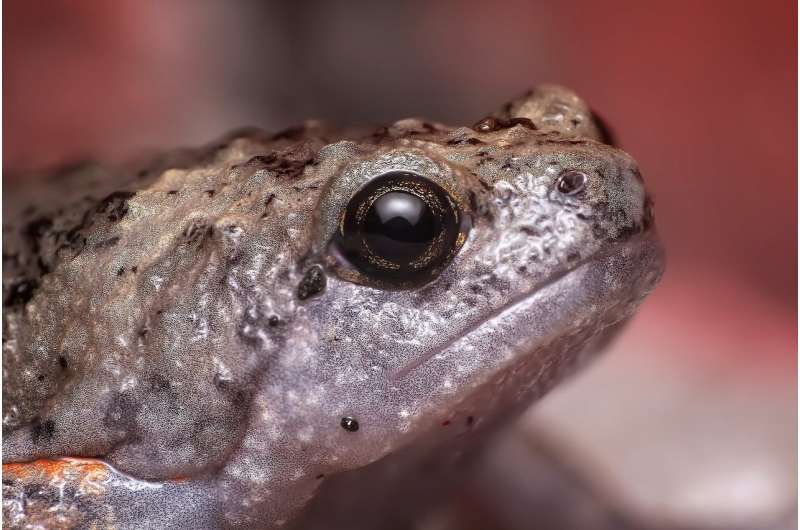Colder temperatures foster greater microbial diversity on amphibian skin

A far-reaching global study led by University of Colorado Boulder scientists has found that climate is a critical determinant of microbial diversity on amphibian skin, with colder, more variable temperatures producing richer bacterial communities than warmer, more stable environments.
The findings, recently published in the journal Nature Ecology and Evolution, are the result of the largest geographical study of the amphibian microbiome in history, with dozens of researchers from 31 institutions combining to sample over 2,300 specimens, encompassing 205 species in 12 countries on five continents.
Amphibian dermal microbes are known to shape their hosts' health and physiology, but the patterns and prevalence of these communities have remained poorly understood at a global scale. Amphibians have become increasingly threatened by habitat losses and fungal infections in recent decades, leading to greater research emphasis on environmental factors that could either help or hinder their survival.
Surprisingly, the new study found that while amphibian species diversity tends to increase in temperate and tropical areas of the world, microbial diversity does the opposite.
The American bullfrog, a widely distributed species whose habitat range spans the globe, proved representative of this phenomenon. The researchers sampled 139 bullfrogs from various locales such as Brazil, Japan, South Korea and the United States, finding that those who experienced lower minimum temperatures during the coldest month of the year had greater bacterial diversity than their fair-weather brethren.
The bullfrogs' microbes also proved to be highly local in character, with just a single bacterium remaining constant among 80 percent of the worldwide specimens and no evidence of an underlying "core" community.
"Bullfrogs are native to eastern North America, but they have become invasive all over the world, which gives us a chance to examine how the microbes of one type of frog compare across very different environments," said Valerie McKenzie, a co-author of the study and an associate professor in CU Boulder's Department of Ecology and Evolutionary Biology (EBIO). "We thought that the bullfrogs from different places might share more microbes in common, but instead, they are influenced very strongly by their local habitat and climate"
The researchers hypothesize that warmer temperatures may encourage faster microbial turnover on the amphibians' skin, leading a few dominant bacteria to quickly conquer and squash diversity. By contrast, colder temperatures may encourage dormancy among some microbes, thwarting the possibility for rapid takeover and allowing for bacterial cycling throughout the year.
The findings could influence future research into amphibian health and resiliency, especially in sub-alpine regions where species such as the boreal toad in the western United States face ongoing threats from climate change-related temperature changes and deadly infections.
"Given the importance of temperature in this large analysis, we have new leads to examine patterns across elevation gradients in our mountain habitats and how those influence microbes and animal health," McKenzie said.
More information: Jordan G. Kueneman et al, Community richness of amphibian skin bacteria correlates with bioclimate at the global scale, Nature Ecology & Evolution (2019). DOI: 10.1038/s41559-019-0798-1
Journal information: Nature Ecology & Evolution
Provided by University of Colorado at Boulder

















